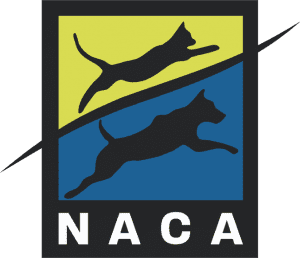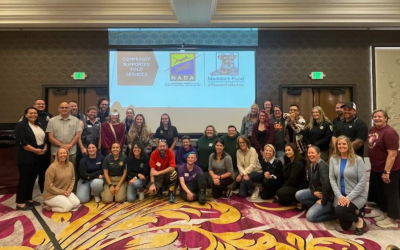Animal Control Intake of Free-Roaming Cats
It is the position [policy] of the National Animal Care & Control Association that, at every opportunity, officers should [will] work to educate the public regarding humane and responsible co-existence and care of pet and community cats, to include education on the benefits and resources for spay/neuter and vaccination; responsible feeding and management practices for those choosing to care for community cats; and effective methods to humanely deter and exclude animals from homes, structures and targeted areas. It is the position of NACA that indiscriminate pick up or admission of healthy, free-roaming cats, regardless of temperament, for any purpose other than TNR/SNR, fails to serve commonly held goals of community animal management and protection programs and, as such, is a misuse of time and public funds and should be avoided.
- Impoundment of healthy adult cats reduces the likelihood of reuniting families with pets:
Lost cats are 10-50 times more likely to be reunited with their owners if they stay in the neighborhood of origin than through an animal shelter. In fact, the most successful reunification method for cats is the cat returning home on its own. A family may not consider their free-roaming cat lost until the point when the cat is removed from the neighborhood and transported to a shelter.- Impoundment of healthy adult cats may disproportionately impact under-served and marginalized communities
- Only 16% of participants in a program supporting low income pet owners have ever called or visited an animal shelter, and only 3% of pets in the same demographic were adopted from a shelter (compared to 30-40% for the general U.S. population), suggesting that impoundment is likely to be a one way journey for pets belonging to low income community members.
- Only ~40 % of people in the lowest income bracket (<$30,000 annual income) that lost cats were reunited with them, compared to > $90% reunited for those making $50,000 or more per year.
- Impoundment of healthy adult cats may disproportionately impact under-served and marginalized communities
- Impoundment has the potential to increase cat populations and impact: The haphazard removal of individual cats is not population management. Removal of cats without concurrent control of the food source has been linked to paradoxical increases in cat populations by as much as 200%.
- Kittens pose a greater risk than adult cats for shedding and spreading parasites with wildlife and/or public health implications (e.g. toxoplasmosis, Toxocara cati, Ancylostoma spp.),
- therefore removing adult cats and destabilizing population age structures further increases risks to the environment.
- Impoundment fails to resolve the inciting factors for nuisance situations: if cats are simply impounded, community members may not be motivated to identify and remedy factors such as open garbage containers that may be attracting cats as well as nuisance wildlife. TNR programs that leave cats where they are have been associated with significant reductions in nuisance complaints.
- Impoundment of healthy free roaming cats reduces capacity to respond to critical community needs: historically “stray cats” have made up the majority of intake at North American shelters. This can leave shelters overwhelmed, overcrowded and less able to provide appropriate care and outcomes for those animals that do require sheltering (such as sick and injured animals, those whose owners can no longer keep them, and animals that have been neglected or abused).
Impounding healthy cats is not the best way to provide services to these cats and the residents in the area in which the cats are found. NACA advises officers to take proactive steps to divert intake of “stray cats” while offering services that support the goals of community animal management and protection programs:
- Refer the public to local organizations or other staff/programs within the shelter that focus on trap-neuter-return, low-cost spay/neuter clinics, or utilize a return-to-home program within the agency if outside resources are not available or accessible.
- Support ongoing care of community cats with information on best feeding practices, referrals to pet pantries and sources for outdoor cat shelters, etc. to reduce likelihood of future complaints and contribute to the wellbeing of the individual community cats. Feeding bans are not effective strategies for dispersing congregations of cats or mitigating complaints.
- Work with residents to mitigate nuisance complaints, deploying a range of available tools (e.g., humane deterrents) and collaborating with caregivers and local TNR and rescue groups.
Exceptions to this policy should be made to mitigate exigent risk or to alleviate significant nuisance situations that can’t be otherwise remedied (e.g. with counseling/education of caretakers, sterilization and vaccination of cats, use of humane deterrents). These circumstances are best identified through a managed admission program that includes contact and counseling prior to intake. Staff should be informed and encouraged to use their judgement on a case by case basis. Exceptions may include the following:
- Evidence of abandonment: Most cats in good body condition are receiving care, however in some circumstances it may be known that a cat has been recently abandoned, e.g. because it is known that the former owners moved and are not returning to care for the cats, or because the structure where the cat was known to be living was recently destroyed.
- Evidence of being lost and unable to reunite: While cats are more likely to return home on their own or through posting in their neighborhood of origin, it may be appropriate to admit a healthy free roaming cat if efforts have already been made to reunite it with the owner (e.g. posting in neighborhood of origin and social media without results; cat has been seen for an extended time without encouragement by feeding).
- Issues with larger groups: Large aggregations of cats may be associated with greater nuisance and risks than individual free roaming cats. A multi-faceted approach should be taken in these cases that leads to gradual reduction or elimination of the group, such as: a combination of caretaker education, sterilization and gradual removal to adoption, and relocation to working cat homes.
- Specific risks identified for wildlife: Removal may be part of a multi-faceted approach to cat management in protected habitats for sensitive wildlife species. However, even in these cases, ad hoc removal (lethal or non-lethal) has not been demonstrated to be effective and in some cases has led to paradoxical population increases in target areas. Unless new arrivals can be excluded by fencing, removal must be sufficiently intensive and sustained to outpace new immigration and breeding, the natural consequence of a decrease in population density. Community buy-in is critical for success and a multi-faceted approach is required that includes input from natural resource personnel, animal services staff and cat advocates.
CONTRIBUTOR CREDIT: Dr. Kate Hurley
REFERENCES:
- Lord, L.K., et al., Search and identification methods that owners use to find a lost cat. J Am Vet Med Assoc, 2007. 230(2): p. 217-20.
- E. Weiss, M. Slater, L. Lord, et al. Frequency of Lost Dogs and Cats in the United States and the Methods Used to Locate Them. Animals (Basel). 2012 Jun; 2(2): 301–315.
- Pets For Life 2017 Program Report. 2017. p. 16
- Hill, et al. Humans and Animal Vulnerability Study.
- Lazenby, B.T., Mooney, N.J., and Dickman, C.R. (2014). Effects of low-level culling of feral cats in open populations: a case study from the forests of southern Tasmania. Wildlife Research, 41, 401-420.
- Finkler H, Gunther I, and Terkel J. “Behavioral differences between urban feeding groups of neutered and sexually intact free-roaming cats following a trap-neuter-return procedure.” Journal of the American Veterinary Medical Association 238, no. 9 (2011); 1141–1149.
- Levy JK, Isaza NM, Scott KC. Effect of high-impact targeted trap-neuter-return and adoption of community cats on cat intake to a shelter. Vet J. 2014 Sep;201(3):269-74.
- National Feline Research Council: Feral cat feeding bans: The reasoning, risks, and results, 2020




